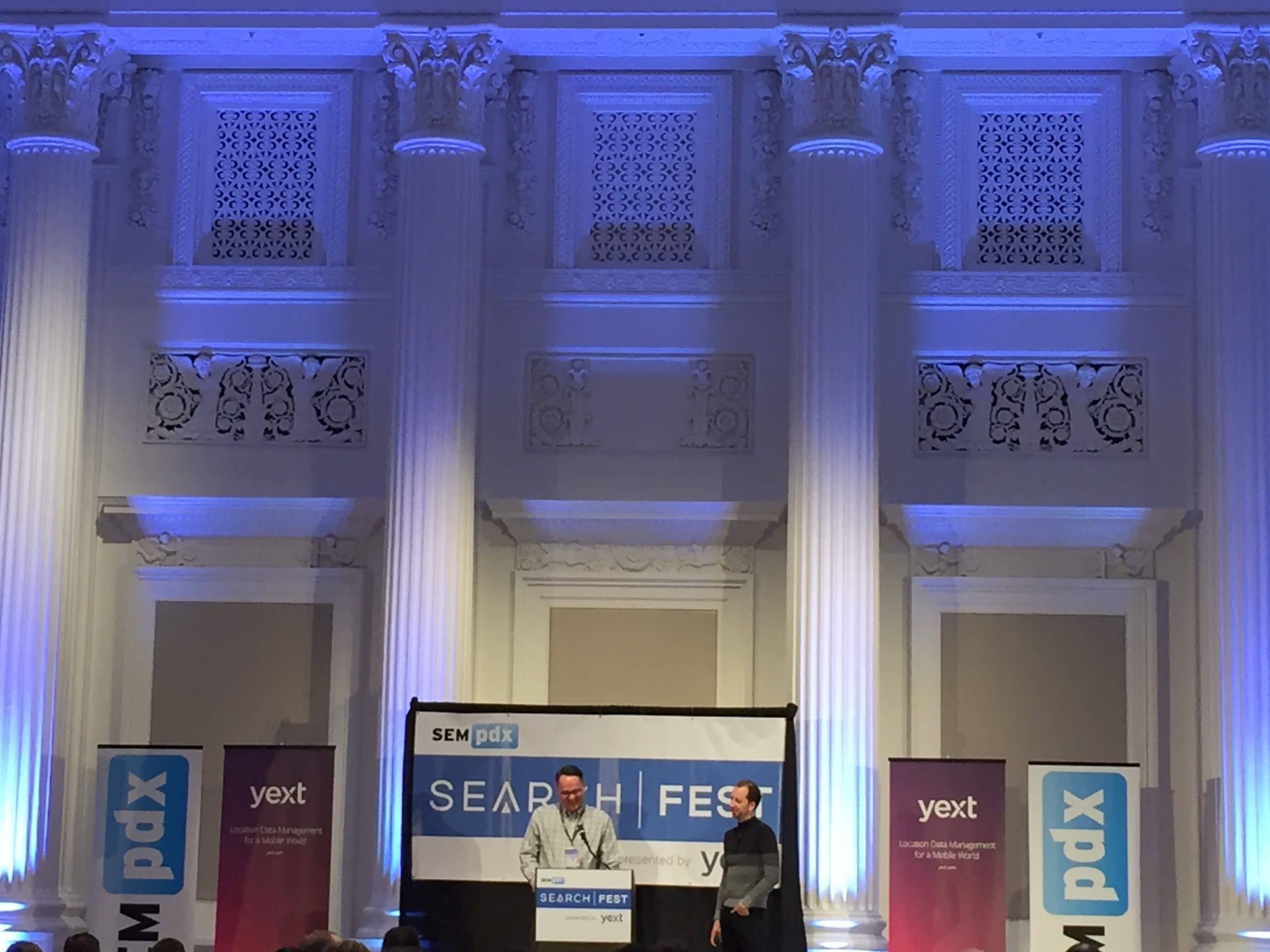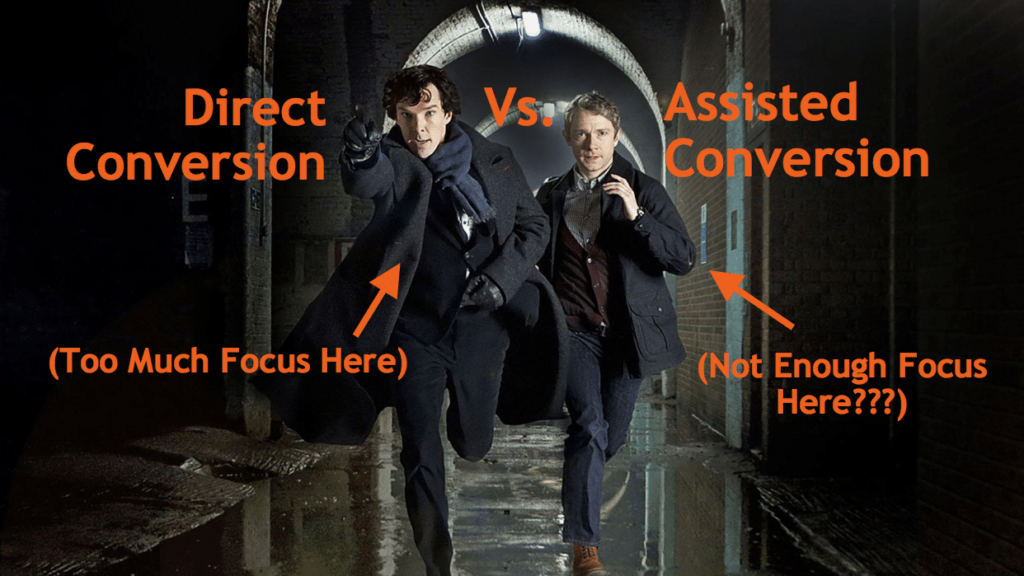Nestled amongst Portland’s rainy skies and bustling food carts stands the grand Sentinel hotel – the venue for SEMpdx’s SearchFest. In its 10th year(!), SearchFest is no stranger to the advances of digital marketing. They cover it all – from search to social, mobile, content and analytics. It’s no wonder that year-after-year, many flock from beyond the Pacific Northwest to learn the latest from our industry’s finest. Here are the top takeaways from our jam-packed day in Portland.
What beats ranking #1? Ranking #0
If you’re an SEO putting all your efforts into rank #1 in the search engine results page, STOP! Today it’s about ranking #0.
What does that even mean? Dr. Pete Meyers explained that featured snippets appear above the #1 spot. So by optimizing for index-generated answers, you can jump the organic queue and drive a shed load of traffic to a site. How much traffic are we talking about? Studies show a +114 percent CTR boost for having the featured snippet. And when your page appears in the answer box, searchers will follow the scent, want to learn more, click and be on the path to conversion.
So how do you get your pages in an index-generated answer box?
- Be on Page 1. The featured snippet spot is attainable even if the site currently isn’t ranking #1 organically. In fact, only about 30 percent of pages that are ranked #1 get the coveted featured snippet spot. All that’s necessary is to get on Page 1, then it becomes more about relevance than authority.
- Answer the question. Next, restructure the page to provide a better answer to the question. “How”, “Why”, and “What” questions are the best for featured snippets.
Search NEEDS Social
Just like how modern SEO reality is far different to the good old days, so too is paid search.
Larry Kim talked about the end of paid search as we know it: Today’s CPCs are at an all-time high, targeting verticals are expensive, mobile ad inventory continues to decrease, and apps are stealing searches. Typical conversion rates via PPC is ~2.35 percent and has remained constant for the past 15 years. Worse still, PPC ads don’t create new demand. So how exactly do we create new demand and convert higher, for less spend?
Better integration with other channels. For too long, PPC has focused on the direct conversion and neglected the assisted conversion. In particular, PPC marketers should care about paid social because social assists the direct conversion and can be used as the catalyst to get the ball rolling or to accelerate PPC efforts even more.
And if you think social media is only about filling the early part of the marketing funnel, think again. As Merry Morud highlighted, Facebook is brimming full of purchase data: more than 70 percent of purchase behavior data is based upon past transactions, such as loyalty cards and credit cards. Want to target high-end outdoor furniture to people who earn six figures and own $1M+ homes? No problem. How about selling travel to couples in long-distance relationships? Easy.
Then maximize efficiency further by throwing social retargeting and Remarketing Lists for Search Ads (RLSA) into the mix. In the wise words of Will Scott, “cookie ALL the visitors.” Will has seen 370 percent higher conversions and 63 percent lower cost per conversion from remarketing efforts.
As paid search marketers, we can no longer operate within a silo. To create demand, and convert more for less, PPC needs to work together with paid social and incorporate smart retargeting techniques.
The Minority Report is here
Casey Markee provided a fascinating introduction to beacons. Beacons are the lighthouses of the 21st century. They transmit a Bluetooth signal to smart devices to inform a new level of proximity awareness. The hyper-local marketing opportunities that beacons create are endless, and the audience is ripe. According to ABI Research, there will be 400 million beacons installed worldwide by 2020, and 800M additional users ready to interact.
Swirl ran a study and found that Beacon marketing campaigns are significantly influencing shopping behavior:
- Likelihood of purchase increased for 73 percent of shoppers
- 61 percent of shoppers will visit the store more often and spend more money
- 60 percent of shoppers will open and engage with beacon-triggered content
- 30 percent will redeem a beacon-triggered offer
It’s no wonder why 85 percent of the top 100 US retail locations will be equipped with beacons by the end of 2016. Be prepared as Black Friday and other holidays come around.
Technical SEO is now more important than ever
In the closing keynote, Mike King provided us with a valuable reminder of our SEO roots.
As SEO has evolved, we started to focus more and more on making good content. But it’s not just about content. The problem is that the web is now more technical than ever. Google is crawling and indexing more. Things that we thought were hidden from search engines are not. More emphasis is being placed on speed and structure.
As we all jumped on the inbound marketing bandwagon, we started to forget about the technical side of SEO: Page speed, canonicals, hreflang, prerendering, schema, internal linking, the list goes on. In this mobile-first era, technical SEO is more important than ever. It can’t be neglected. And with this, SEOs need to get back to testing ” it’s the only way to accelerate our learning and stay ahead of the pack.
Ask anyone at AIMCLEAR, and they will tell you how SearchFest holds a very special place in our hearts. Alas, SEMpdx sadly announced that this was the last year of SearchFest… but only because its name will change to Engage moving forward! Very fitting since this conference jewel encompasses so many aspects of digital marketing that go beyond just search. Thank you SEMpdx for another wonderful conference and we will see you next year at Engage!











